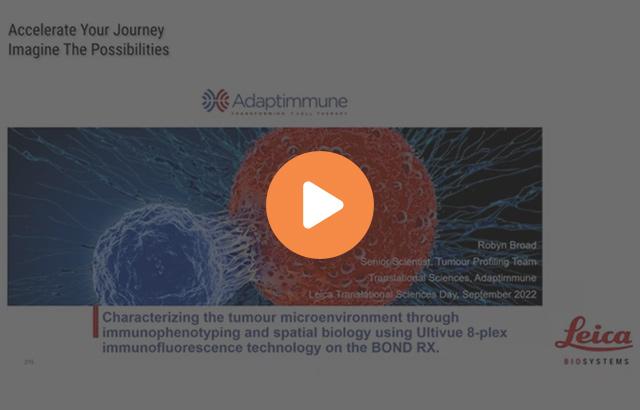
Strategies for Spatial Multi-omics: Co-detection of protein and RNA biomarkers on a single FFPE tissue section powered by InSituPlex® Technology


1. Background and Introduction:
Understanding the complexities of a particular tumor microenvironment can vastly improve the accuracy of immuno-oncology clinical prognosis and accelerate the discovery of immunotherapy targets towards patient-focused personalized medicine, as well as help researchers gain a more complete understanding of mechanisms of action and cellular phenotypes that may be promoting or hindering response. To this end, biomarker detection approaches capable of rapid identification, quantification, and spatial mapping of the many cell types of the tumor environment within FFPE tissue sections are becoming increasingly valuable for investigating the highly complex biology of tumor microenvironments.
Multiplexed immunofluorescence (mIF) approaches enable the detection of multiple protein targets with their spatial context in a single tissue sample, which in turn enables the identification of diverse cellular subtypes, shedding light on the phenotypic microenvironment of the tumor. Although many mIF staining methods exist, most require a long assay development time, provide limited information on small regions of heterogenous tissue samples or require specialized instrumentation and long imaging times. In contrast, the Ultivue® InSituPlex® (ISP) technology enables rapid, pre-optimized staining of multiple targets simultaneously in a single FFPE tissue section. Furthermore, Ultivue’s flexible portfolio of ISP-based kits, including FixVUE™ kits (formerly called UltiMapper) include ready-to-use panels with conventional manual and automated workflows for use with a variety of commercially available automated imaging systems. Additionally, ISP technology facilitates high-multiplex kits staining on single slides through sequential imaging of multiple targets, where up to four targets are imaged in one round, followed by gentle signal removal and application of a different set of probes for the next round of imaging.
In the field of spatial biology, phenotypic and transcriptomic analyses are evolving in parallel. However, to investigate complex cellular interactions, in-depth multi-omics analyses often require detecting several protein and RNA targets on a single tissue section. Co-detection of protein and RNA can also be valuable for contextualizing the tissue microenvironment by visualizing specific secretory proteins like cytokines. Additionally, co-detection of protein and RNA enables correlative analyses of different markers based on protein and RNA expression levels. Further, detecting RNAs for specific biomarkers can serve as a proxy for detecting proteins using antibodies when antibody use is unfeasible (e.g., when antibodies are not available, have suboptimal specificity, or have longer production timelines). Because FixVUE™ reagents efficiently preserve the tissue microenvironment throughout the entire assay workflow, ISP assays can be integrated with other spatial detection assays for combined protein and RNA detection.
In this white paper, we demonstrate the compatibility of ISP assays for protein detection with a commercially available RNAscope® assay (Advanced Cell Diagnostics, Inc.) for RNA detection. This study highlights the value of an integrated ISP-in situ hybridization (ISH) workflow for co-detection of protein and RNA targets on a single FFPE tissue section.
발표자 소개

Gourab is currently leading Ultivue’s Product Strategy and Management. He is a Biomedical Researcher with extensive experience in assay/technology development for molecular pathology and diagnostics. Over the last seven years, he and his team have created groundbreaking advances in biomarker detection technologies to support translational researchers with an end-to-end solution that provides clinical-grade biological insights to validate clinical trial hypotheses.
He led key research efforts towards development and launch of Ultivue’s foundational InSituPlex® (ISP) assays and expanded its applications with OmniVUE™ and U-VUE® biomarker panels. Currently, he is leading strategic initiatives across Ultivue’s portfolios by combining its core technologies (InSituPlex® and STARVUE™) towards having a transformative impact on precision medicine.
Gourab holds a Ph.D. in Bioengineering from University of Washington Seattle where he developed novel DNA-based nanosystems that can perform molecular computation inside living cells.

Kirsty Maclean has 20 years of leadership experience addressing academic, biotech, clinical research organizations (CRO) and pharmaceutical industries through clinical/technical communication, sales support, and strategic market intelligence. Previously Kirsty held leadership roles in commercial development and scientific communications at CodexDNA, Defines (now part of AstraZeneca), Nanostring Technologies and ThermoFisher Scientific. Prior to industry, Kirsty spent 8 years as a post-doctoral researcher and staff scientist at St. Jude Children’s Research Hospital, and to date has over 35 peer reviewed publications and book chapters. She holds a PhD in Hematology and a BS (Hons) in Biochemistry.
Related Content
Leica Biosystems 콘텐츠는 Leica Biosystems 웹사이트 이용 약관의 적용을 받으며, 이용 약관은 다음에서 확인할 수 있습니다. 법적고지. 라이카 바이오시스템즈 웨비나, 교육 프레젠테이션 및 관련 자료는 특별 주제 관련 일반 정보를 제공하지만 의료, 규정 또는 법률 상담으로 제공되지 않으며 해석되어서는 안 됩니다. 관점과 의견은 발표자/저자의 개인 관점과 의견이며 라이카 바이오시스템즈, 그 직원 또는 대행사의 관점이나 의견을 나타내거나 반영하지 않습니다. 제3자 자원 또는 콘텐츠에 대한 액세스를 제공하는 콘텐츠에 포함된 모든 링크는 오직 편의를 위해 제공됩니다.
모든 제품 사용에 다양한 제품 및 장치의 제품 정보 가이드, 부속 문서 및 작동 설명서를 참조해야 합니다.
Copyright © 2024 Leica Biosystems division of Leica Microsystems, Inc. and its Leica Biosystems affiliates. All rights reserved. LEICA and the Leica Logo are registered trademarks of Leica Microsystems IR GmbH.



